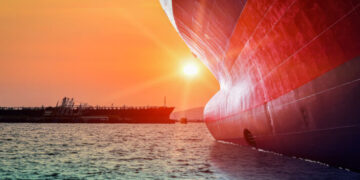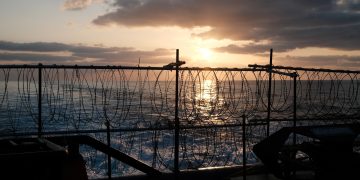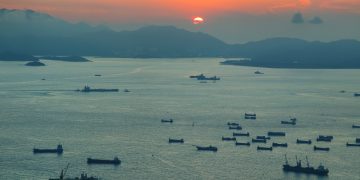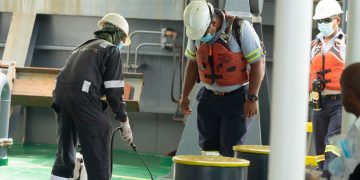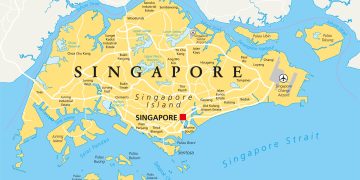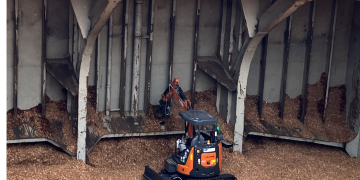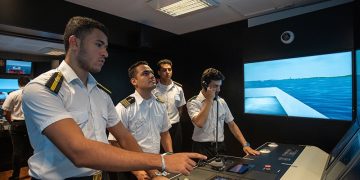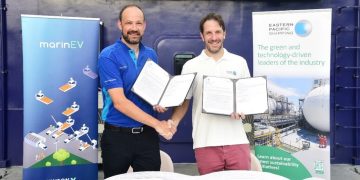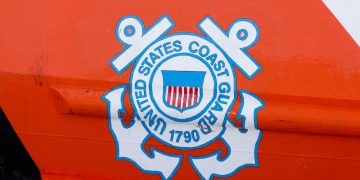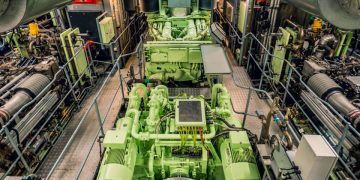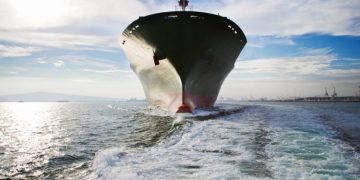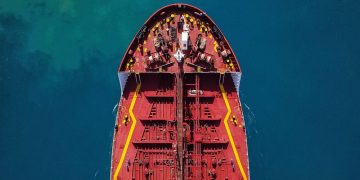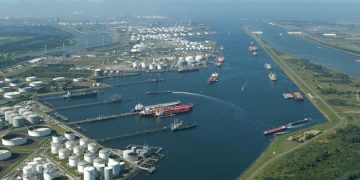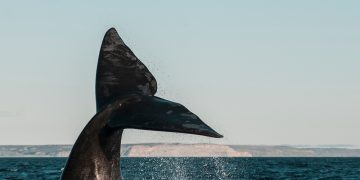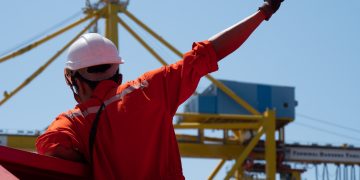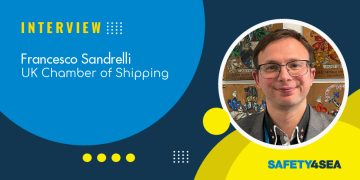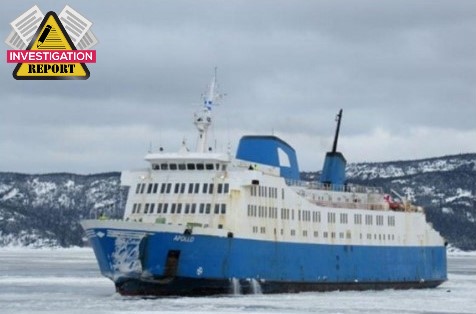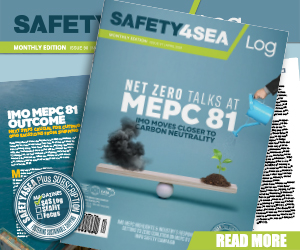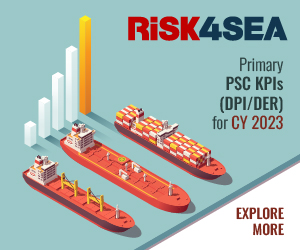The Transportation Safety Board of Canada (TSB) has released its investigation report on a March 2019 berthing incident involving the roll-on/roll-off ferry Apollo in Matane, Quebec.
The incident
On 16 March 2019, the crew was preparing the Apollo for the return trip from Godbout to Matane. In response to a request by the master, the chief engineer went to the starboard bridge wing console to look into replacing the button that was used to activate control of the bow thruster at that console. The plan was to replace the existing button in the next few days with one that would illuminate to indicate the operational status of the bow thruster. This would allow the master to have a visual indication of the bow thruster’s status while performing docking manoeuvres. The modification had been requested following instances in which the master had not realized that the bow thruster’s main breaker had tripped while he was using the bow thruster to manoeuvre the vessel near shore infrastructure. The chief engineer opened the console panel in order to identify the electrical circuit for the bow thruster, moving some of the electrical wires in the process. Once he was finished, the chief engineer secured the console panel back in place.
[smlsubform prepend=”GET THE SAFETY4SEA IN YOUR INBOX!” showname=false emailtxt=”” emailholder=”Enter your email address” showsubmit=true submittxt=”Submit” jsthanks=false thankyou=”Thank you for subscribing to our mailing list”]
At the time of departure, the wind was from the west at about 20 knots. The forecast for the crossing was westerly winds from 25 to 35 knots. At 1745, when the vessel was about midway through the crossing, the master reduced the vessel’s speed because the wind speeds had increased and the sea state had deteriorated. Once the Apollo was approximately 4 NM from Matane, the 3rd generator set was brought online. Switching on the 3rd generator set was an informal practice to address the fact that the Apollo’s 3 generator sets were operating at a reduced capacity. The practice of using all 3 generator sets was done to accommodate additional demand from the bow thruster and the deck equipment during docking manoeuvres.
At 1903, the master called STQ personnel in Matane to inquire about the wind speed in the port. The master was informed that the wind speeds had increased beyond those originally forecast upon departure and were now between 35 and 40 knots. At 1908, the vessel was approximately 2 NM from Matane when the master received a call from the engine room crew. They informed him that 2 of the generator sets had shut down automatically when their overheat sensors had activated because of seaweed and debris blocking one of the strainers on a cooling line. The engine room crew had kept the 3rd generator set running by switching over to the other strainer on the cooling line. The engine room crew asked the master to give them some time to resolve the situation before proceeding to dock in Matane.
The master decreased the vessel’s speed to 2 knots and ordered a course alteration to bring the vessel windward to reduce its rolling motion while the engine room crew removed air locks in the generator sets’ cooling lines. By approximately 1928, the engine room crew had the generator sets running again, and the master decided to resume the voyage toward Matane. At this time, the engine room crew informed the master that the bow thruster had been activated and was ready for manoeuvring operations.
At approximately 1930, just before the vessel arrived in the port, the master communicated his intended docking manoeuvre to the bridge team. To mitigate the risk posed by the winds, the master had planned a docking manoeuvre that would make use of at least 1 anchor. He had the crew standing by to release 1 or both anchors if needed. The master intended to proceed into the port with the bow windward, drop the port anchor to create a pivot point if needed, and then back stern-first to the dock.
The master ordered the chief officer to the forecastle to prepare the anchors. The trainee master was asked to relay communication between the master and the forward and aft mooring teams.

At 1939, the Apollo entered the port of Matane. The master took conduct of the vessel from the starboard bridge wing console and pressed the button to transfer control of the bow thruster from the bridge to the starboard bridge wing console for docking. The wind was blowing from the west at 35 to 40 knots, and the wave height was about 0.5 m. As the Apollo proceeded past the outermost mooring dolphins, the master used a combination of engine, rudder, and bow thruster controls to put the bow windward. The vessel’s response was minimal, and it continued on a transverse course under the influence of the wind.
Meanwhile, the mooring team was standing by on the forecastle ready to deploy the anchor during the docking operations. In the engine control room, the crew was closely monitoring the bow thruster’s ammeter for excess load consumption and the generator sets’ diesel engines for high temperatures. If either was observed, the crew was to notify the master, who could reduce thrust or stop using the bow thruster.
At approximately 1942, the master ordered the mooring team to drop the port anchor to create a pivot point for the vessel. Shortly after the anchor was dropped, the wind pushed the Apollo toward the rail ferry Georges Alexandre Lebel, which was moored nearby, bringing the stern of the Apollo to within 45 m of the rail ferry’s bow. The master immediately ordered the mooring team to drop the starboard anchor to stop the Apollo from getting any closer. The starboard anchor was dropped at approximately 1945.
At 1948, in order to make a different approach, the master put both engines to full ahead with the rudders hard to starboard and moved the bow thruster controls to turn the vessel’s bow toward the mooring dolphins. The master managed to reposition the vessel for the new approach, and the crew was ordered to heave up the starboard anchor. At 1952, the master started approaching the mooring dolphins bow-first with the port anchor dragging on the sea bed.
The engine room crew, still monitoring the bow thruster’s ammeter, noted that it showed no electrical consumption as the vessel was manoeuvring. The chief engineer called the bridge team and asked if the bow thruster was in use. The helmsman answered the call and, after noting that the white and amber indicator lights for the bow thruster on the bridge console were lit, provided an affirmative response. This light combination indicates that the bow thruster is activated and control is at the bridge console.
At 1954, the Apollo’s starboard side was brought alongside the mooring dolphins, but the stern swung toward them under the influence of the wind. The master throttled the engines full ahead and put the rudders hard to starboard, which, in combination with the strong wind, caused the vessel’s bow to swing toward the mooring dolphins. The master moved the bow thruster controls to counteract the movement of the vessel’s bow and turned the rudders hard to port, but the Apollo’s bow continued moving toward the mooring dolphins, striking one of them at 1955.
At 2005, the Apollo moored alongside the dock. The master ordered the crew to check the vessel for damage. After considering the damage, the crew determined that it was safe for the passengers and vehicles to disembark. There were no reported injuries.
Analysis
When the Apollo was approximately 4 nautical miles (NM) from the port of Matane, the master was informed that the wind speed in the port was between 35 and 40 knots. These speeds were above those forecasted upon departure. The master had no vessel-specific wind speed limits for docking the vessel, and his decision to pursue docking in these winds was likely influenced by the Apollo’s proximity to its destination and the inherent risks posed by a return trip to Godbout, Quebec, particularly given issues with the generator sets. To mitigate the risk posed by the winds, the master had planned a docking manoeuvre that would make use of at least 1 anchor and had the crew standing by in preparation to release 1 or both anchors if needed.
During the entry of the Apollo into the port of Matane, the master pushed the button on the starboard bridge wing console to transfer bow thruster control from the bridge; however, the transfer did not initiate because of a broken electrical wire. The wire was in poor condition and likely broke just prior to the Apollo’s departure from Godbout when the console panel was opened as part of verifications to install a status indicator light for the bow thruster. Given the environmental noise from the wind and waves present at the time of the docking manoeuvres in Matane, as well as the darkness, the bow thruster’s operational status could not be confirmed based on the noise it normally produced or the presence of visible thrust in the water. There were also no indicators on the starboard bridge wing console to provide the master with this information. While it was possible for the bridge crew to verify the bow thruster’s operational status by checking the ammeter readings through the engine room crew, this was not done, and, as a result, the master was unaware that the bow thruster’s control had not transferred to the starboard bridge wing console.
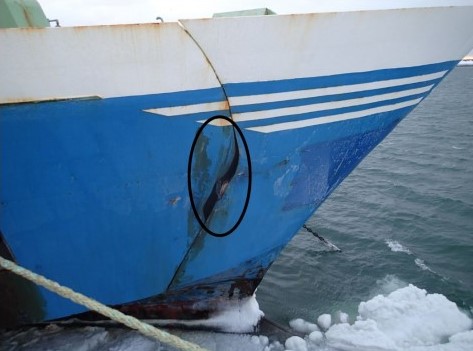
When it became apparent that the manoeuvre was not going as planned, the master deployed the anchors and continued to make multiple inputs to the bow thruster, the engines, and the rudder to maintain control of the vessel within the confines of the port. Without status indicators on the starboard bridge wing console, the master continued with the docking, unaware that the bow thruster was not responding to his inputs.
The noise from the wind and the waves, the darkness, and the absence of status indicators on the starboard bridge wing console prevented the master from noticing that the bow thruster was not responding to inputs.
As the Apollo approached the dock, it was noted that the ammeter showed no bow thruster electrical consumption, and the chief engineer called the bridge to check if the bow thruster was in use. In response to the question from the chief engineer, the helmsman noted that the white and amber lights on the bridge console were illuminated and, without checking with the master, he misinterpreted that the bow thruster was being used. As a result, the master remained unaware that the bow thruster was not working.
The combination of the high winds and the ineffective bow thruster controls during docking manoeuvres resulted in the vessel’s bow striking one of the mooring dolphins, breaching the vessel’s hull.
Probable cause
- The master pushed the button on the starboard bridge wing console to transfer bow thruster control from the bridge; however, the transfer did not initiate because of a broken electrical wire.
- The noise from the wind and the waves, the darkness, and the absence of status indicators on the starboard bridge wing console prevented the master from noticing that the bow thruster was not responding to inputs.
- In response to the question from the chief engineer, the helmsman noted that the white and amber lights on the bridge console were illuminated and, without checking with the master, he misinterpreted that the bow thruster was being used. As a result, the master remained unaware that the bow thruster was not working.
- The combination of the high winds and the ineffective bow thruster controls during docking manoeuvres resulted in the vessel’s bow striking one of the mooring dolphins, breaching the vessel’s hull.
- Under pressure to restore the ferry service and considering the Apollo to be a temporary vessel for short-term use, the Société des traversiers du Québec put the vessel into service without adequately identifying hazards and assessing their associated risks. Although there were known risks associated with the use of the Apollo’s bow thruster, there were no formal mitigating measures put in place, which led to the master being unaware that the bow thruster was not operational while docking the vessel in high winds at Matane.




